Spotlight > Whistle Maker by Country > United Kingdom > Porteous > 016 Three Tube (Lrg) Porteous Wind Instrument – Registered 1845, Special Edition
Whistory
For this Special Edition SPOTLIGHT, we are focusing on the description of three sizes of the three & four tube 1845 Registered Porteous Wind Instrument. Previously it was thought there was only one size of each. Perhaps this was due to the picture on page 46 of More Whistles by M. Gilchrist – 2005, who was an early pioneer of whistle collecting and publications.
Changes Now Described in Porteous Wind Instrument Whistles
Currently there are more Porteous whistles known and can be compared. Why are these such rare whistles? Several factors come into play such as age, quality, production and therefore rarity. Possibly they are kept longer due to their uniqueness and do not come to market, because of this. Whatever the reason, we now can study them closer.
It may be that others will surface, such as duplex or five tube models. In a future article SPOTLIGHT Richard Porteous (Spotlight 53) will be described in detail as a designer of many whistles. The only known earlier dated whistle by him is the Field Pipe which preceded the Wind Instrument by as many as 15 years.
Stevens and Son has been attributed to manufacturing Porteous’ earliest whistles. However, this likely has been assumed, because the Stevens name was stamped on certain whistles with the Porteous name during the 1860s on actual whistle plates and bodies.
No Clear Verification of Manufacturer Origin in Wind Instrument Whistles
There has been no substantiation provided for earlier dated whistles proving that Stevens Co. did the manufacturing prior to 1865. Granted the Stevens name ( of the patriarch ) had been in existence already working with brass.
Furthermore, the Porteous Field Pipe of the 1830s did come in brass ( none have been found ), but also fine nickel silver and even sterling silver. The Porteous Field Pipe reflected the quality and work of a musical instrument company of its time period. The Porteous Windpipes were rough and reflected another manufacturer more akin to a musical instrument maker.
The style and quality of the musical instrument in the Field Pipe is superior to that of the brass windpipes, therefore the rough workmanship in the Wind Instruments reflect yet another maker.
It could be for example, that because Porteous spent his life as a band leader, that he contracted a musical instrument maker for both designs, possibly makers such as Kohler, Potter, Pask & Koenig ( who were advertised distributers of the Field Pipe ), to manufacture his whistle designs.
| Category | multi-tube |
| Order | Richard Porteous |
| Type | railway hunting |
| Class | brass |
| Sub class | 3 models 3 sizes |
Whistle Archeology
Previously it was only known under the research done by Martyn Gilchrist and others that only two models of multitube Wind Instruments existed. Now it has been unearthed that there was a six-tube model and that the three tube and four tube wind instruments came in three sizes each.
Whistology
We start off comparing the two sizes of three tube Wind Instruments. The length of the larger is 9cm, while the smaller is 7.8cm. The larger weighs in at 150 grams, the smaller is 97 grams.
The inside diameter ( ID ) of the larger tube is 1.6cm, whilst the smaller is 1.2cm. Top cap is 4.3 wide, the smaller is 2.5cm wide.
Here the larger can be seen to be a cumbersome whistle, although beautiful in workmanship
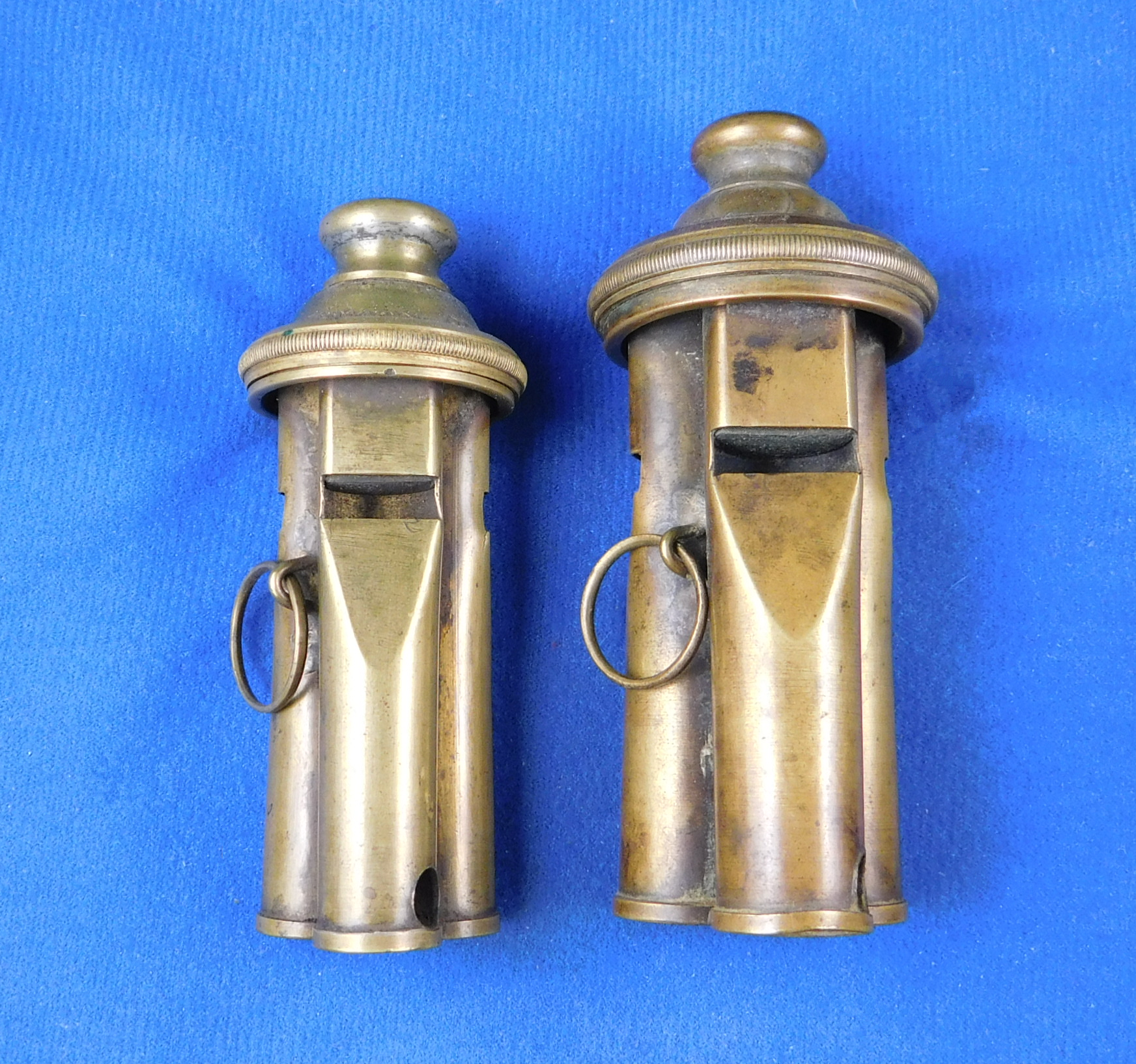
Note the distribution center under the top cap as follows. Threads on such a wide top cap are rough.
The workmanship reveals the thinking of musical instruments. Each whistle is of brass and the cast tops are quite ornamental. The windows slanted and looking somewhat like pipe organs.
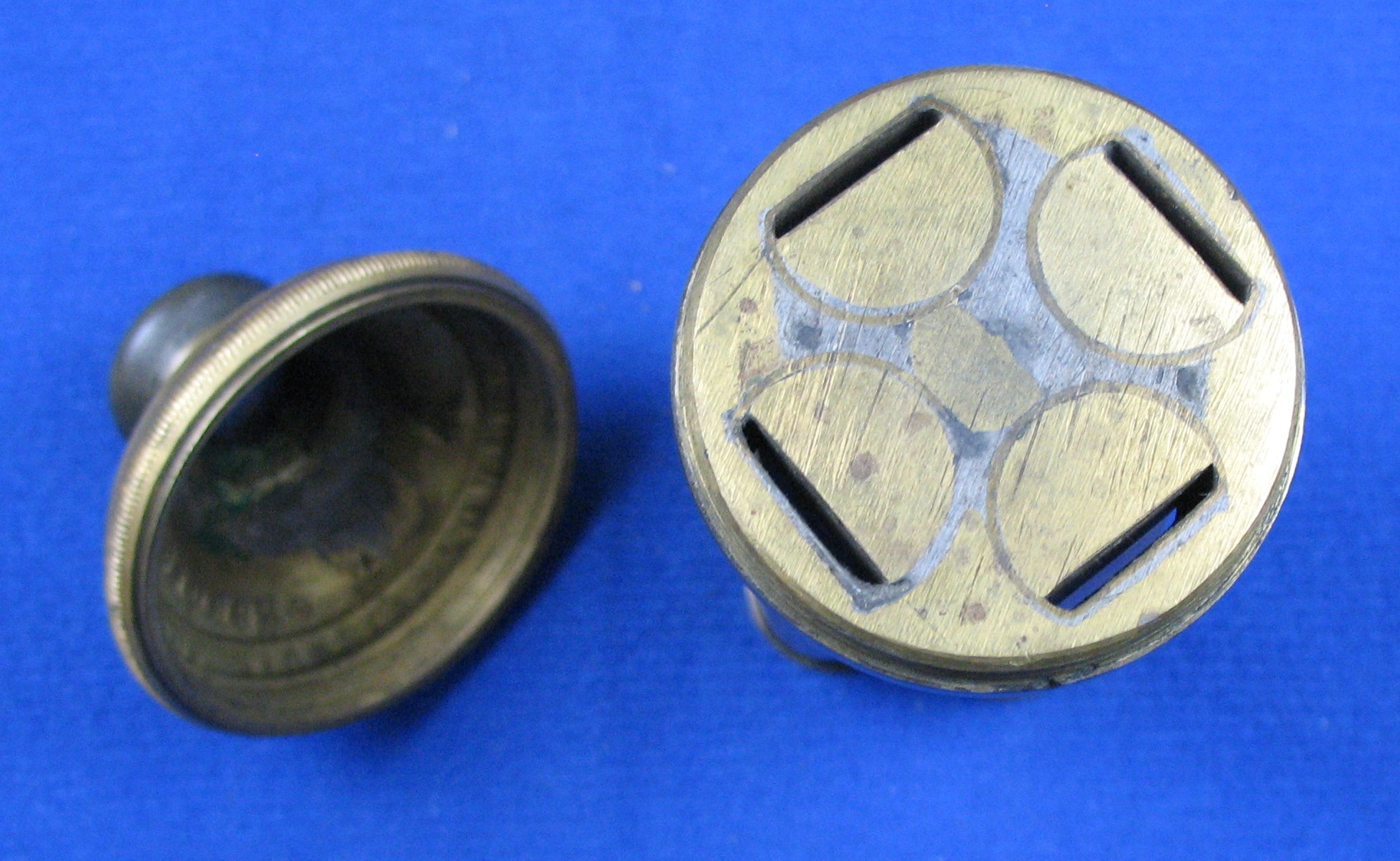
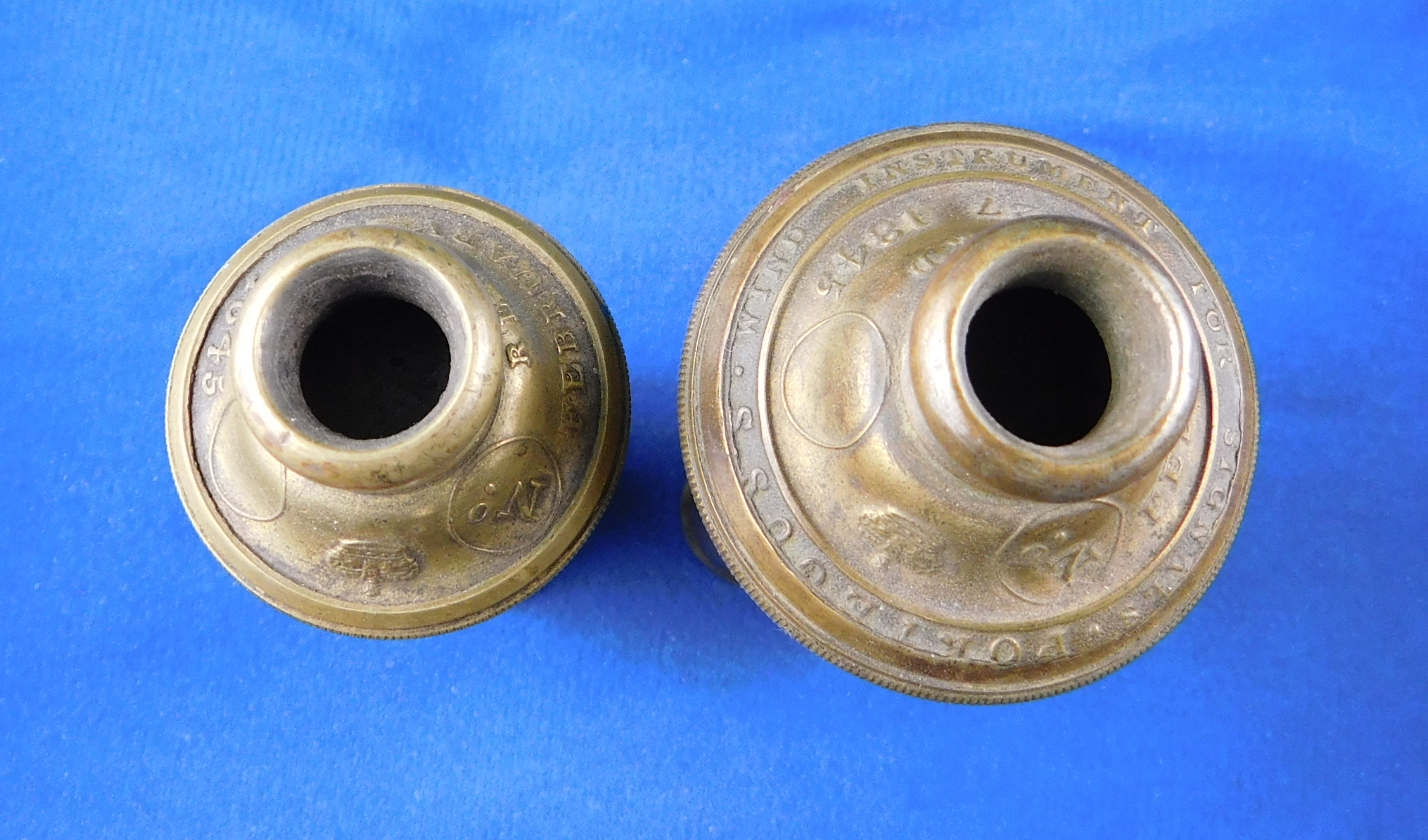
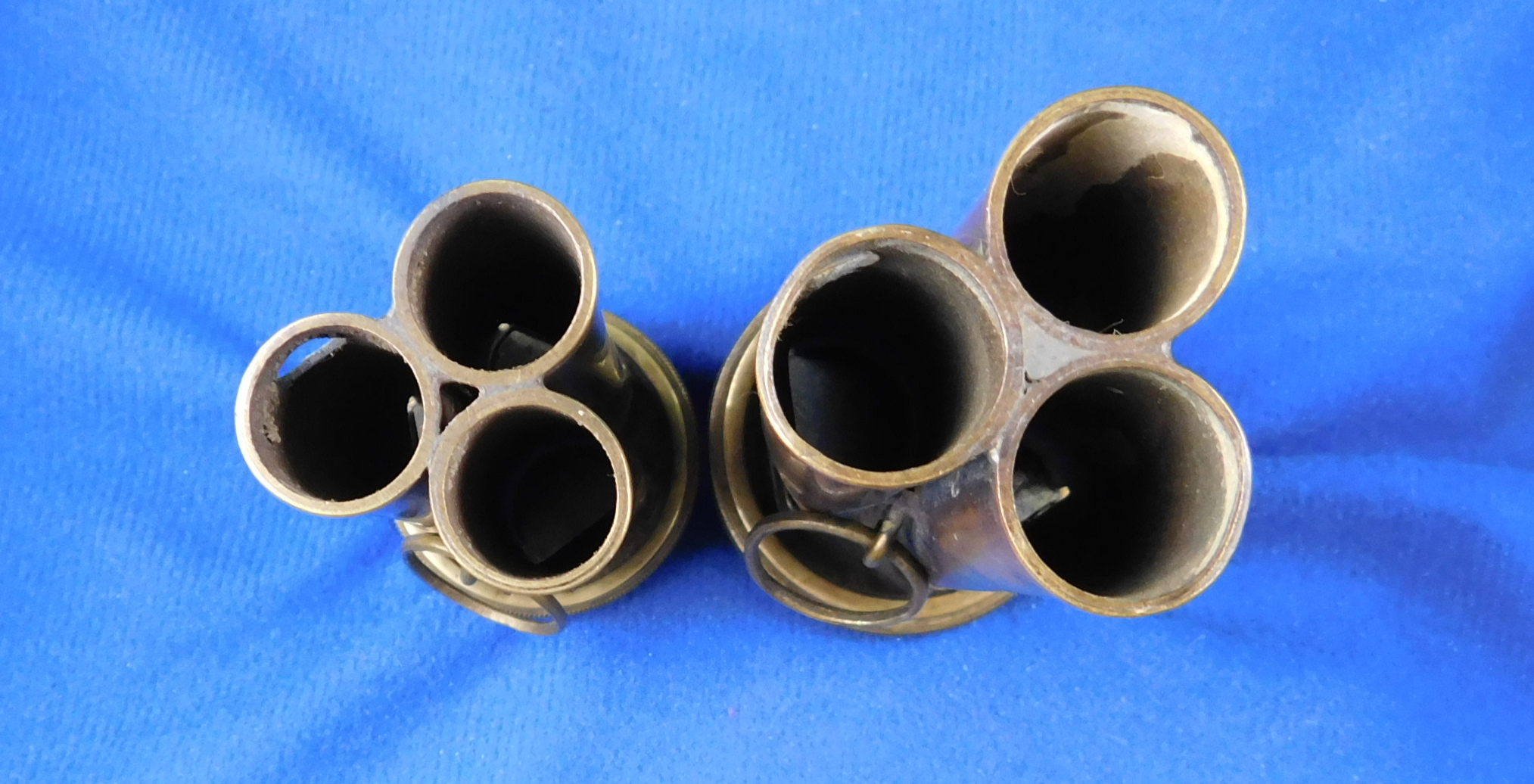
Next, we examine four tube whistles of the same type of design. The following three sizes are of four tube design, leading us to think there is another third size of three tube whistles.
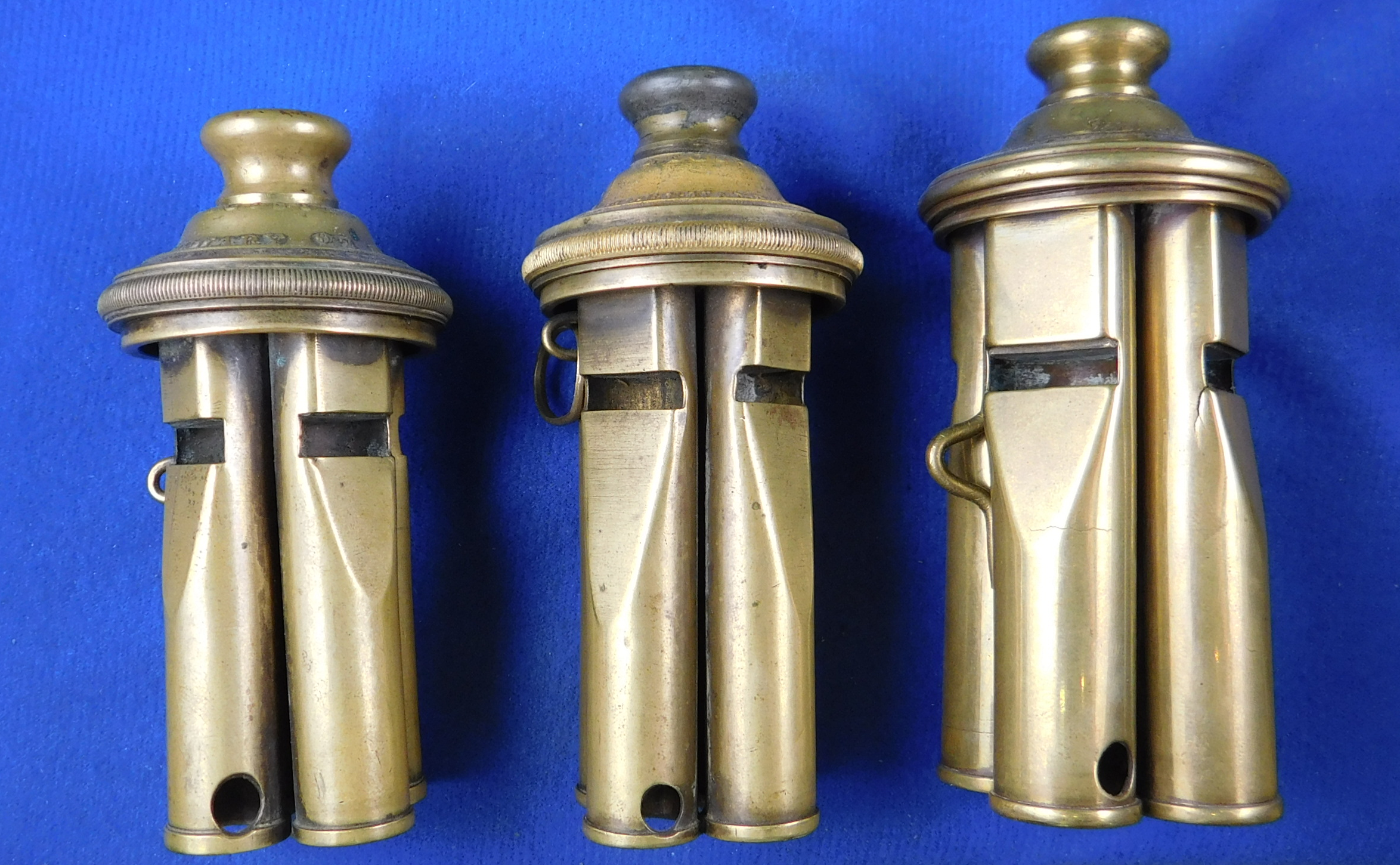
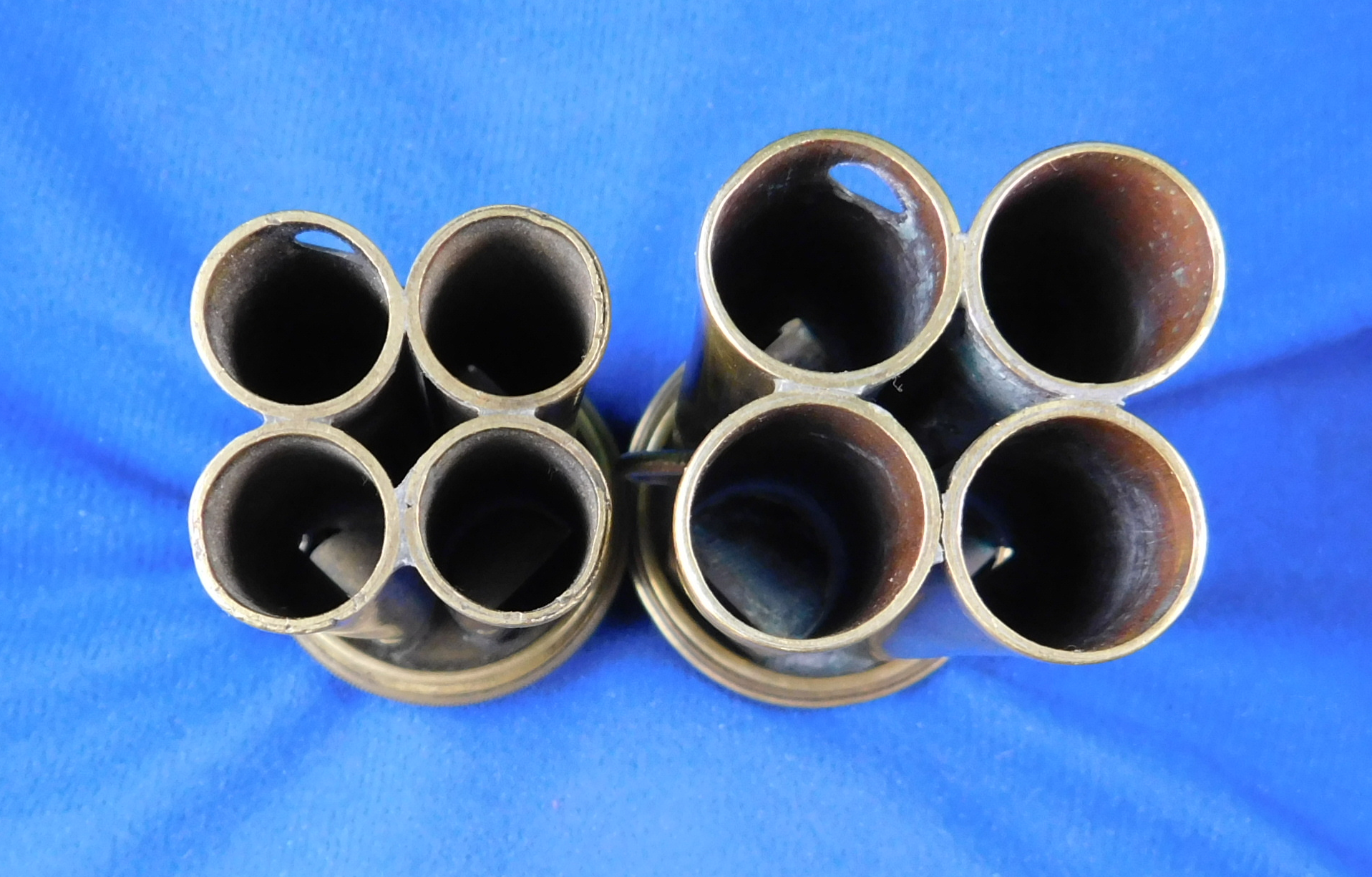
The top cap is 3.5cm and the weight is 185 grams.
Lastly a comparison of all three whistle models. Three, four and six ( 214 grams ) tubes.
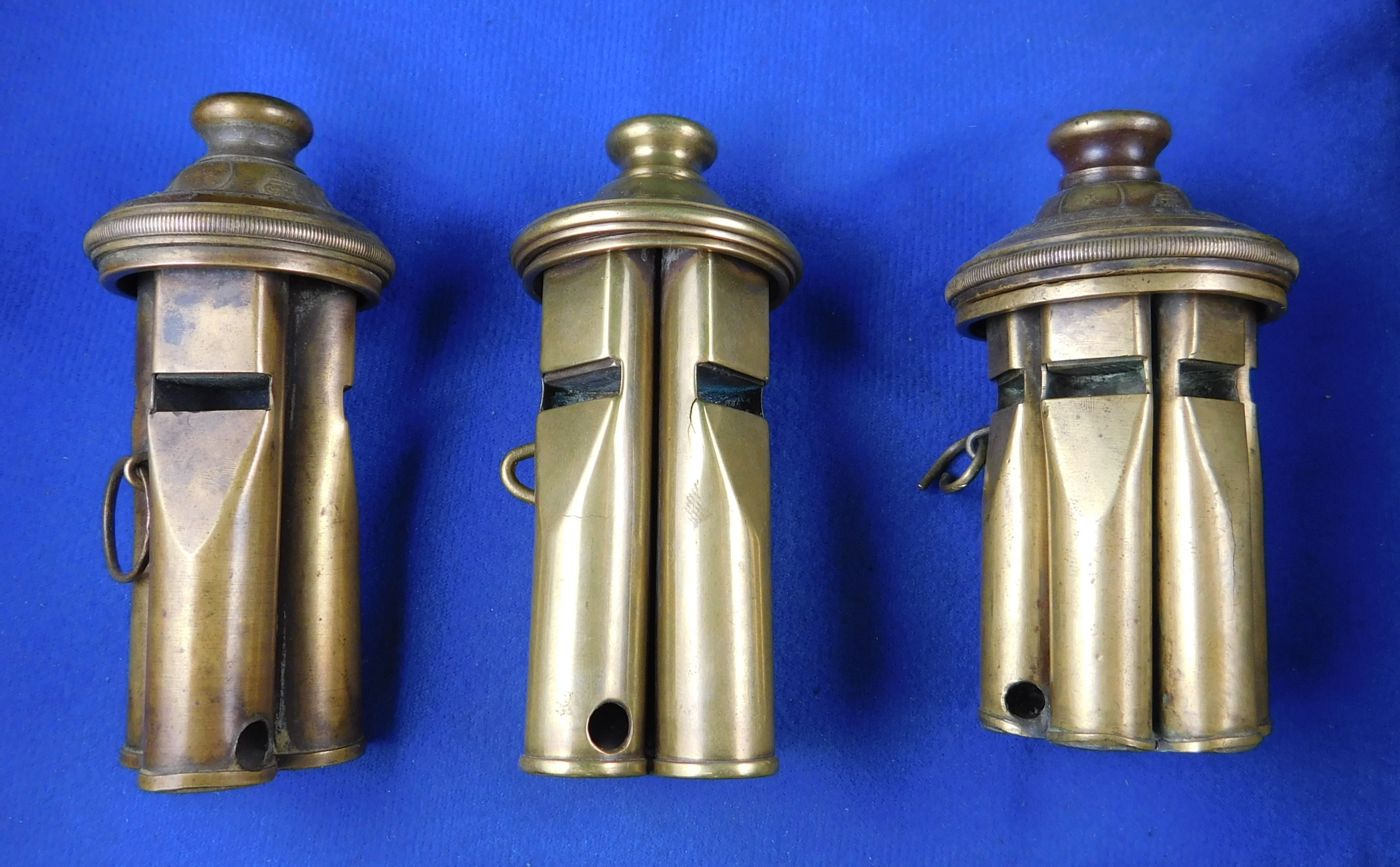
Conclusions:
With the advent of several sizes of Porteous Wind Instruments comes a widening of our vista and adds to the worldwide data base. What are we now looking for and why ? Well, at this point a duplex or five tube 1845 Registered Porteous Wind Instrument would be possible. One recorded news clip of the day describes Porteous as making different sizes, so we have reason to think that he made a medium size three tube. This whistle is possibly already in someone’s collection and not described is all.
The workmanship is exactly alike on all of the Wind Instrument top caps, reflecting the registration. All are screw on tops, albeit ‘rough’ in application — something that would be improved upon dramatically in time with other makers ( the Field Pipe is an exception ).
Notably these Wind Instruments ceased to be made at some point in time between 1845 and approximately 1860 when he shifted direction. Whether they were too bulky to use or too expensive to make is not known. None the less, Richard Porteous designed a beautiful series of whistles with the Porteous Registered Wind Instruments.
TWG
Posted June 16, 2013
Revised November 22, 2018
Revised September 2, 2020
Revised January 16, 2021
Revised February 12, 2021
Revised December 30, 2021
Revised February 13, 2022
Bibliography:
More Whistles by Martyn Gilchrist 2005
SPOTLIGHT 53: Richard Porteous
Reference Collection Whistle Gallery
© – All photos with blue background property of The Whistle Gallery reference collection. Please contact The Whistle Gallery for permission of use of any website content. Spotlight articles are copyrighted. Please contact The Whistle Gallery for permission of use of any website or Spotlight article material written or otherwise. Use of photos without authorization is prohibited.










